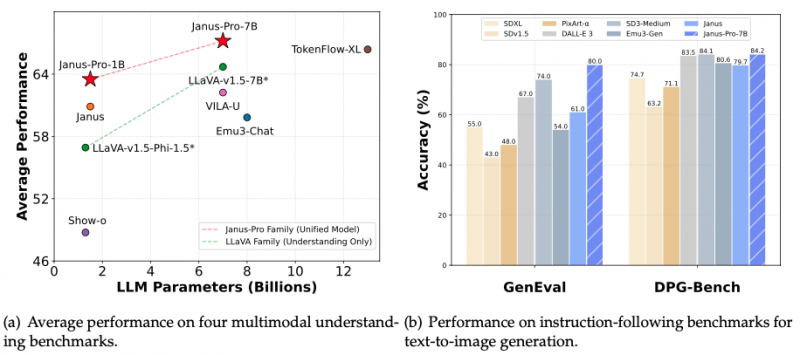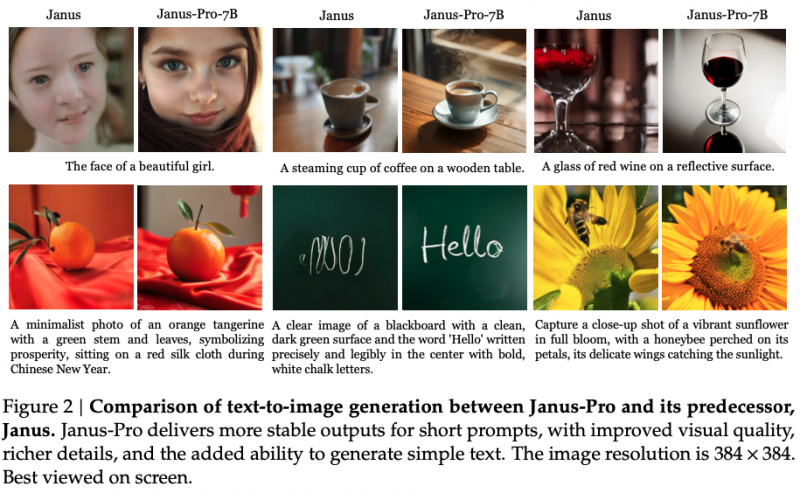 AI
AI
 AI
AI
 AI
AI
DeepSeek, the Chinese artificial intelligence startup behind the release of the ultra-popular DeepSeek AI chatbot and provider of an alterative large language model to OpenAI’s models such as ChatGPT, launched a new cutting-edge AI image generation model on Monday: Janus-Pro-7B.
The startup made waves recently after the latest release of DeepSeek’s frontier R1 LLM last week that the company reported it trained for significantly lower cost than similarly sized models. In the resulting news cycle on Monday, Nvidia Corp., the largest provider of advanced AI chips, and many other tech companies involved in AI, saw their stock prices plummet. The capabilities of the R1 model, its lower price to train, and lower costs to deploy showed that the company could have a substantial competitive edge.
Now DeepSeek has released Janus Pro, an image generating model the company claims that has been engineered for versatility and efficiency. It is and advanced version based on the Janus model, released last year, that performs text-to-image creation that scales up the training data and increases the model size.

The company claims that the new Janus-Pro-7B model outperforms existing AI models such as OpenAI’s DALL-E 3 and Stability AI’s Stable Diffusion in leaderboard rankings for image generation.
Similar to existing image generation models, users can input text describing a photo or artwork, and Janus Pro will produce an image based on the input. The company said that Janus Pro provides image generation and image analysis, or computer vision, capabilities. This means that users can also feed it a picture and have it caption it or ask questions about what the model “sees.”
To build Janus Pro, DeepSeek said that it developed a “novel autoregressive framework that unifies multimodal understanding and generation.” The company said that the model addresses an inefficiency that arose by decoupling visual encoding into a separate pathway, and uses a single, unified transformer for processing. According to the company this enhances the framework’s flexibility.

“Janus surpasses previous unified model and matches or exceeds the performance of task-specific models,” the company said, introducing the Janus Pro model on its HuggingFace repository. “The simplicity, high flexibility, and effectiveness of Janus make it a strong candidate for next-generation unified multimodal models.”
Image generation models such as Janus are of particular interest to businesses and marketing firms because they can create realistic and complex images, including faces, objects and logos at scale. Their use can be helpful for saving time and money for creative production, especially for the generation of custom imagery in advertising, blogs, social media and product images.
Just like its text generating model DeepSeek-R1, the company has released Janus-Pro-7B free and open-source. It is available under the MIT license. A demo of the AI model can be found on HuggingFace.
THANK YOU